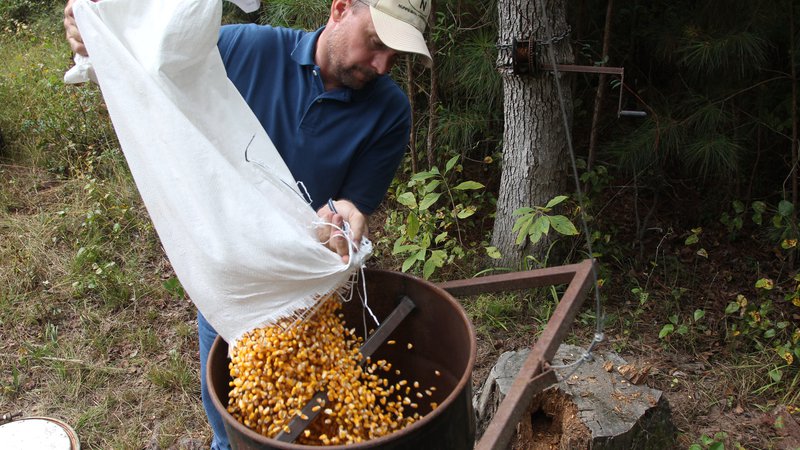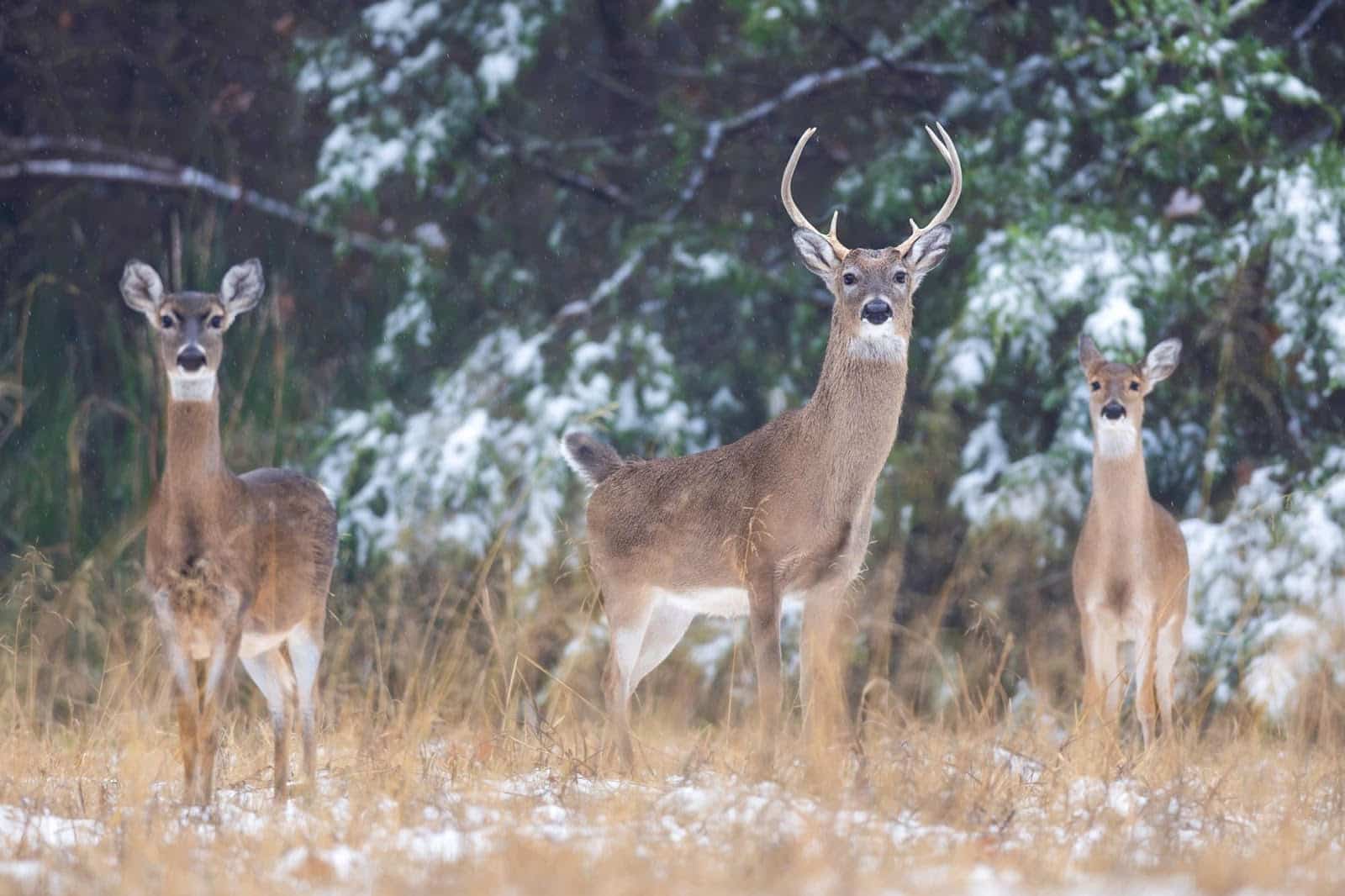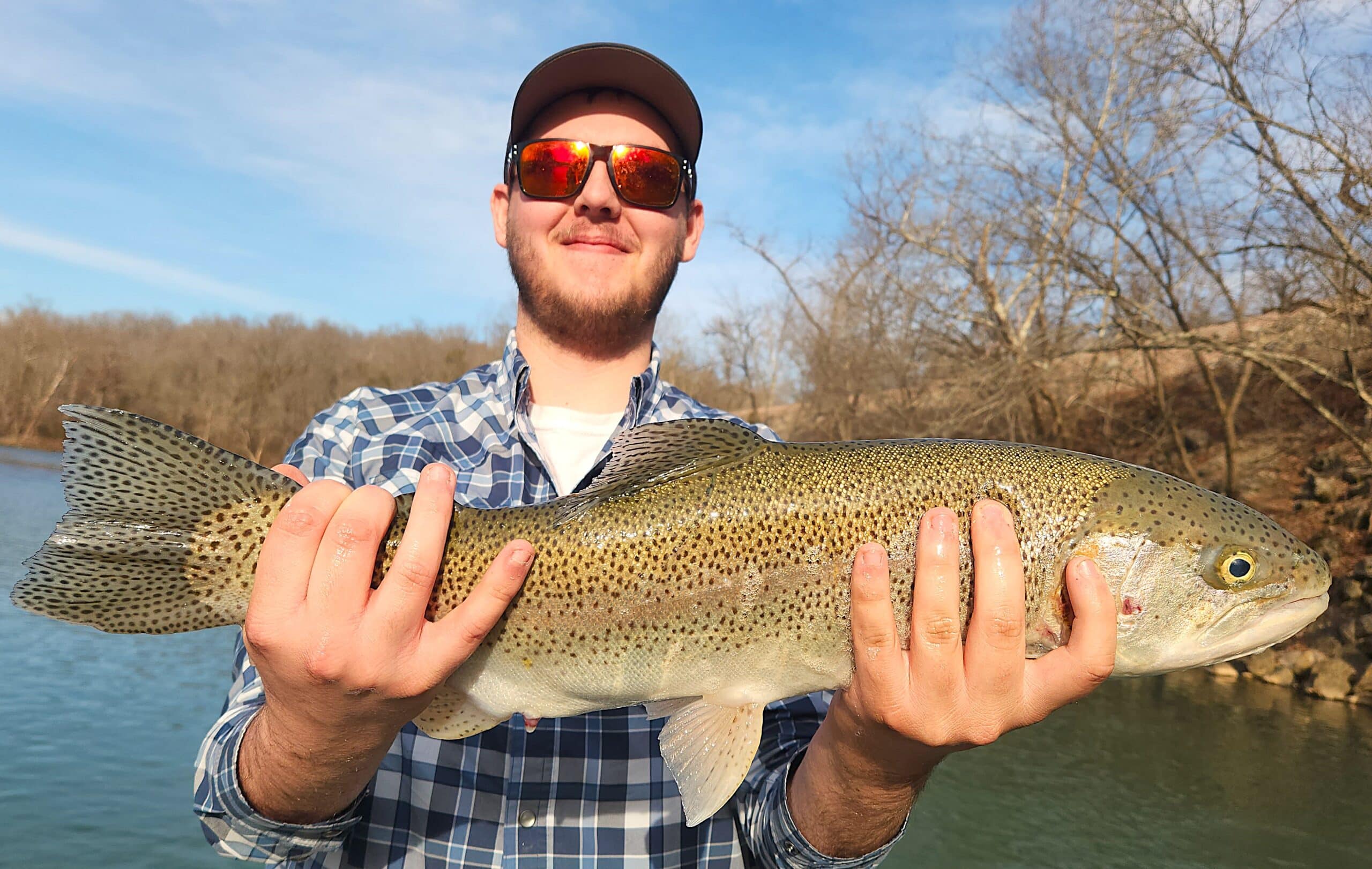Think twice before filling the corn feeder
ON 08-14-2019

Aug. 14, 2019
Randy Zellers
Assistant Chief of Communications
LITTLE ROCK – As summer begins to take its toll and the start of deer season nears, many deer hunters are beginning to think about how they can help the deer in the areas where they hunt. Many are thinking of loading a feeder with corn to help the deer through the summer stress. There is a better way.
According to a survey of Arkansas deer clubs in 2011, 89 percent of hunters on private land fed deer at some point during the year and 96 percent of those used corn. A quick glance at any rural gas station or sporting goods store will reveal dozens of sacks labeled “deer corn” to confirm this finding that corn is the food of choice for many deer hunters.
Compared to natural food sources, corn has little nutritional value to deer. It has some value in winter as a high-energy food when acorns are not abundant and natural vegetation has died back, but it doesn’t give deer the nutrition they need all year. The sudden switch to the heavy carbohydrate load from the corn also can change the chemistry in the deer’s stomach and prevent proper digestion. Like kids spoiling their dinner with a candy bar, deer will eat the easy meal, decreasing the amount of room they have for the foods they really need, which are already growing from the ground.
Commercially sold “deer corn” also does not have to meet the same requirements as corn sold for livestock or human consumption. In some cases, corn that couldn’t pass inspection for cattle or swine is sold at reduced prices and then bagged and labeled for wildlife. Some of this feed can contain high levels of aflatoxin, a contaminant derived from fungus on the corn. If present, this toxin can be extremely dangerous for many animals, including turkeys, quail, doves, rabbits and other small game.
Deer show less effects from the toxin, but it can wreak havoc on their digestion, cause immunity issues and liver damage. The toxin also can be present from fungus growing on clean corn that is left in a feeder during warm, humid conditions common in Arkansas.
AGFC personnel collected samples of whole shelled corn from retail stores and from field samples during the 2008-09 deer season. Aflatoxins were detected in 10 of 51 samples obtained from retail stores ranging from 5.2-476.0 parts per billion (20 parts per billion is considered too high for consumption by pets, immature animals and dairy cows; 300 parts per billion is too high for livestock consumption.) Aflatoxins were detected in 39 of 151 field samples having levels ranging from 5.3- 897.7 ppb.
If you still decide to use corn in a feeder, it’s important to check the label to see if it underwent any testing for contaminants and try to keep the feeder at low levels so corn can be used before the toxin-causing fungus has a chance to grow in the barrel.
Aside from issues with corn, supplemental feeding of wildlife may cause other unforeseen problems — predators and disease.
It’s a rare day when a trail camera pointed at a feeder doesn’t return at least a few images of raccoons, skunks, bobcats, coyotes and feral hogs. You’ll also see turkeys, quail and other birds enjoying the free lunch. Concentrating predators at the same place where you’re likely to attract ground-nesting birds and other small game is a recipe for disaster, especially during nesting season. Many studies on turkey nest success have confirmed that hunters are essentially creating a “dead zone” around any feeding site they establish during spring. The visiting hen leaves a scent trail back to the nest, drawing keen-nosed coyotes, raccoons and other predators right to her and her clutch.
Feeders also carry increased potential to spread diseases, such as chronic wasting disease.
Researchers believe CWD is transmitted through prions shed from infected deer through saliva, urine and feces. By encouraging deer to eat from the same plate, you’re increasing the likelihood of every deer being exposed if one brings the disease when it shows up for dinner. Because of this potential, feeding wildlife outside of deer season is restricted in Arkansas’s CWD Management Zone. See agfc.com/cwd for more information on this restriction.
Food plots with a variety of plantings offer much more benefit to deer and don’t have many of the unintended side effects associated with feeders.
Ralph Meeker, AGFC’s deer program coordinator, says hunters can more effectively improve nutrition (for deer and other wildlife) by planting stuff in the ground instead of pouring it out of a bag.
“An assortment of plantings can offer a year-round food source on your property that provides many more benefits without the risks of feeders,” Meeker said. “Food sources can range from soybeans and varieties of peas to clover and winter wheat. Good plots can grow as much as 10,000 pounds of forage per acre with protein content of more than 25 percent and at a cost of about 3 cents per pound of forage.”
Meeker suggests hunters interested in improving their land through food plots take advantage of the private lands biologist located in their region. These men and women can show you how to take soil samples, where the best locations for food plots may be and write a plan that will take you step-by-step through the process. They also can identify many other opportunities to improve wildlife habitat on your land and even find possible programs that will help offset any costs of improving your property for wildlife habitat. Visit www.agfc.com/habitat for more information on the AGFC’s Private Lands Program.
Recent News
Subscribe to Our Weekly Newsletter E-mails
Don’t miss another issue. Sign up now to receive the AGFC Wildlife Weekly Newsletter in your mailbox every Wednesday afternoon (Waterfowl Reports are published weekly during waterfowl season and periodically outside the season). Fishing Reports arrive on Thursdays. Fill in the following fields and hit submit. Thanks, and welcome!


